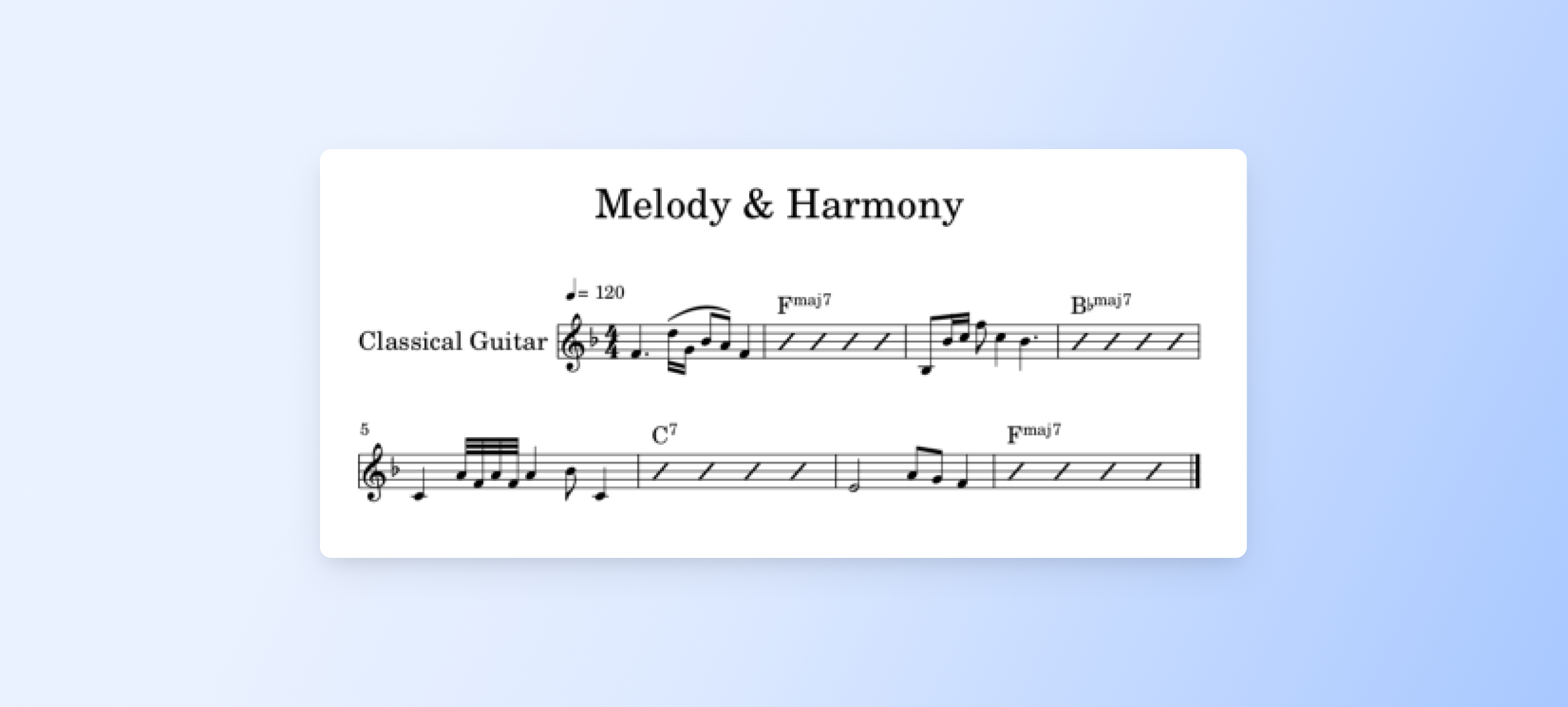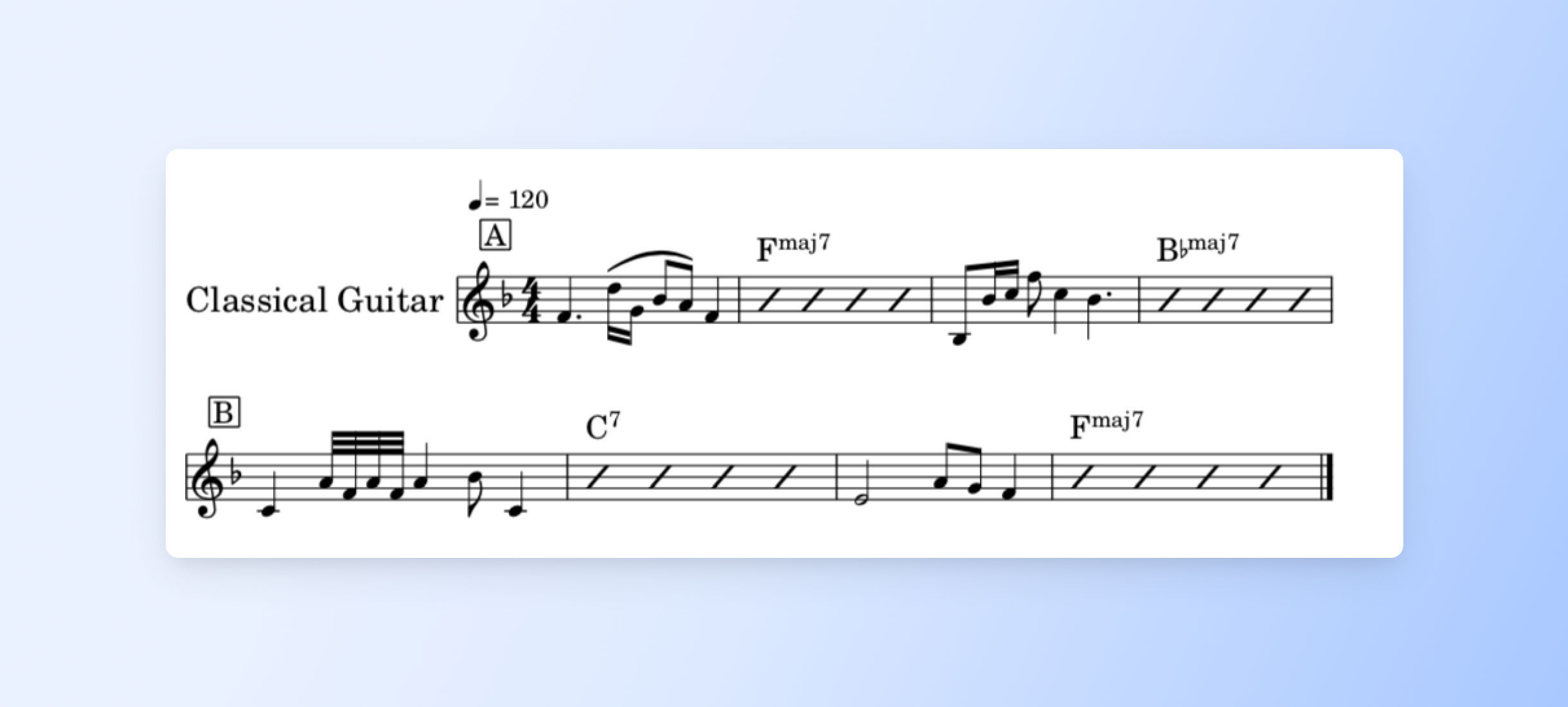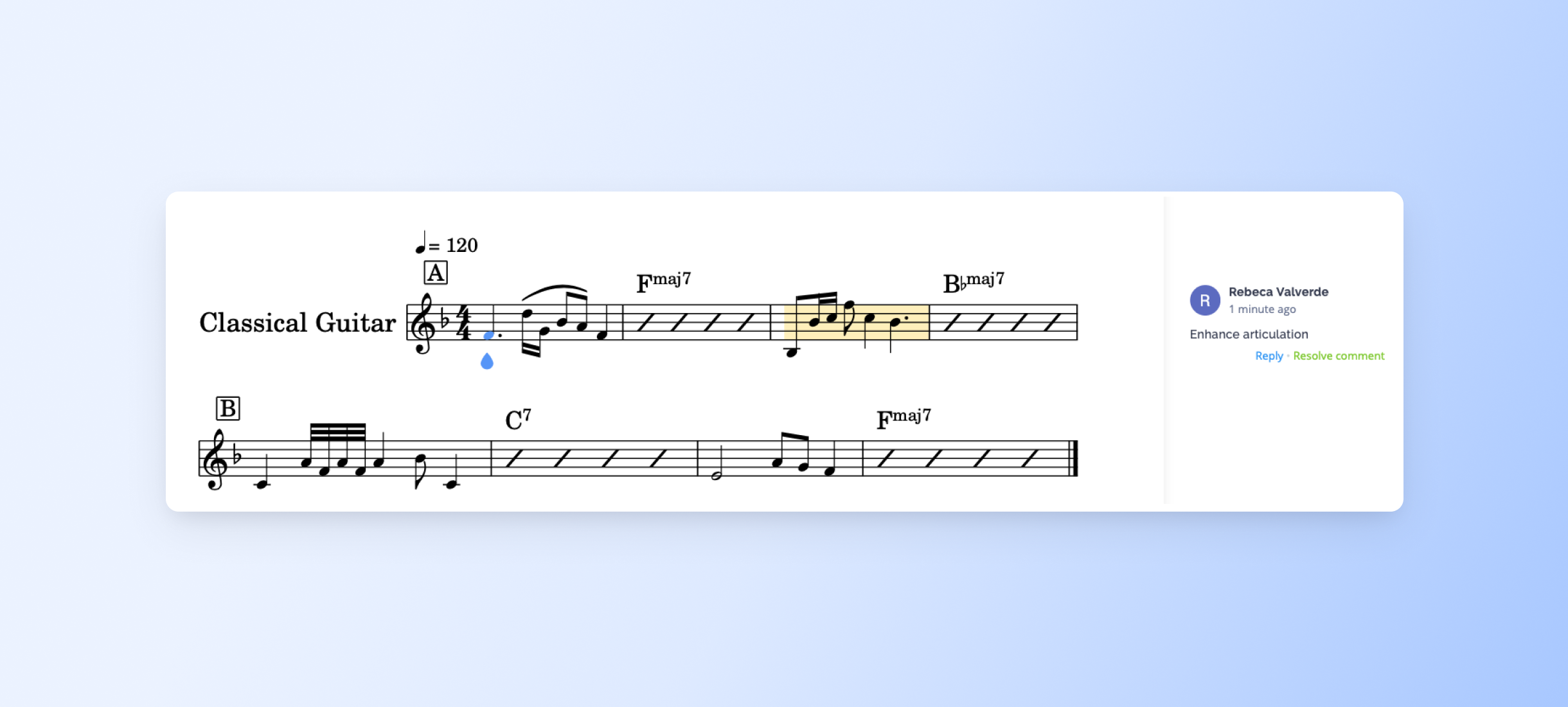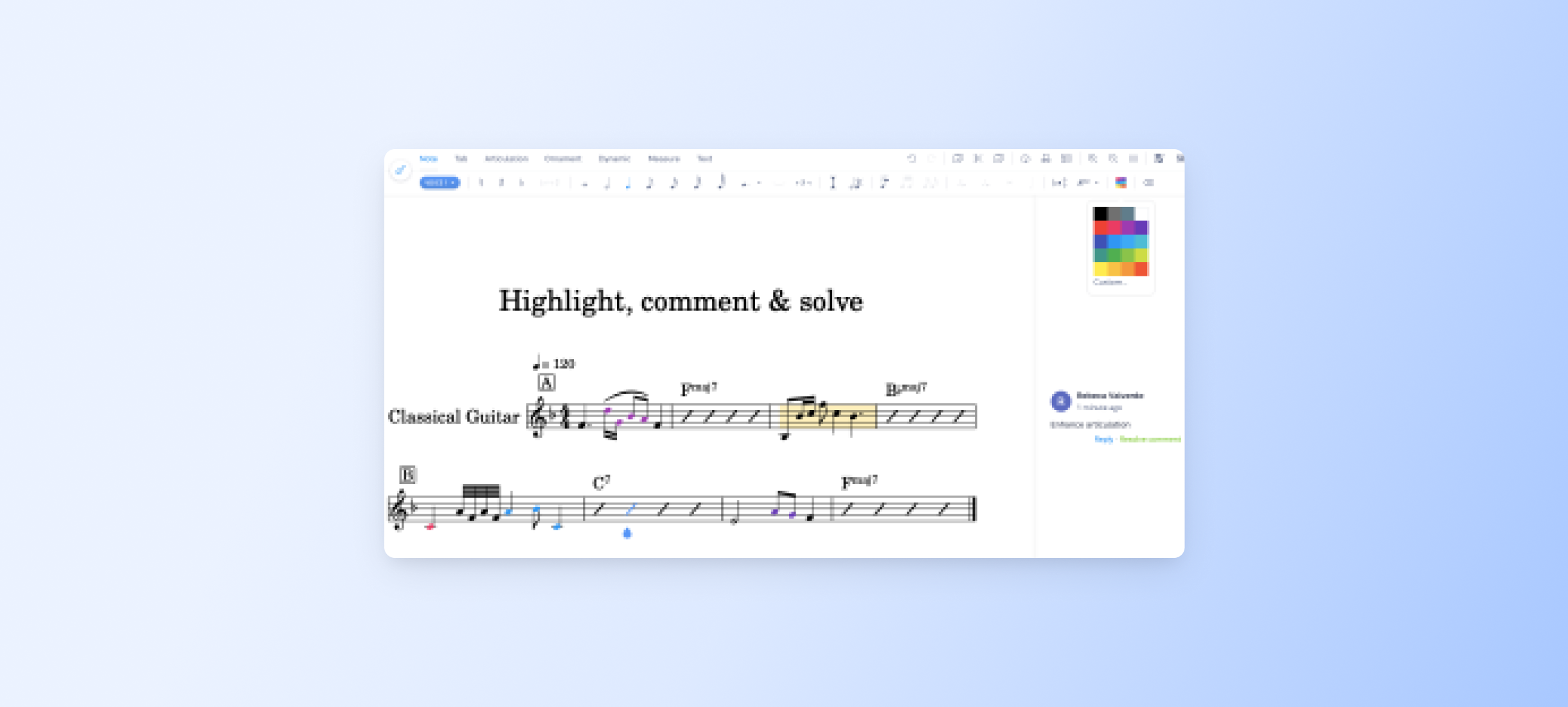Flat is more than just a piece of music notation software. Today, I'm going to share four ways you can use this tool to study and improve your musical performance.
As musicians, we can face the challenge of maintaining a consistent study routine. Personally, as a guitar player, I was looking to revitalize my learning approach to overcome a certain feeling of monotony and improve my skills. And so I wanted to share some insights that might help you, too! Of course, these study techniques aren't just for guitarists; they can benefit all musicians, no matter their instrument.
Assuming you're not in the 0.00001% of born geniuses, becoming a skilled musician requires dedicated practice. But without fresh perspectives and innovation, that journey can feel mundane. That's why we should be open to adapting and reinventing our study methods, bringing new enthusiasm to our musical pursuits.
Let's add excitement and creativity to your study routine with Flat!
1. Progressively increase the tempo
If you can play something slowly, you can play it fast. This was the advice my first violin teacher always gave me, and my experience makes me think it's true.
(Random fact: The violin was the first instrument I learned to play.)
Here's a helpful technique to improve your performance:
- Open the music score you want to practice in Flat.
- Find a part that you find difficult to play and copy it using the editor.
- Start playing the section slowly until you are comfortable with that tempo.
- Gradually increase the tempo during your practice sessions.
- Over time, you'll notice that playing slowly actually helps you play faster without struggling.

Example:
If your goal is to play at 120 BPM, start with 80 BPM, then 90 BPM, then 100 BPM, and finally, 120 BPM. If you're using Flat, you can match your playing to the playback to ensure you're at the right tempo.
💡 Tip
Don't forget to activate the metronome to maintain accuracy in your playing --> tutorial here.
2. Boost memory
Flat can be a valuable tool to enhance your memory skills when practicing music.
Here's a technique you can use:
- Open a score in Flat and insert some bars in the section of the piece you are studying, and intersperse them with silent bars.
- Click on play to start the playback.
- While the playback is on, focus solely on listening to the music.
- During the silent bars, it's your turn to play the section yourself.
By alternating between listening and playing, you engage your memory and improve your overall musical abilities. This technique helps reinforce what you hear and play, making your practice sessions more effective and rewarding.

🔥 Another twist to boost memory
Enhance your practice with this variation:
- Enter the section of the piece you're studying in Flat.
- Copy and paste the section, leaving a few bars blank.
- Click on play and challenge yourself to remember what was in the blank bars while playing along.
This variation technique not only hones your playing skills but also strengthens your memory. By recalling the missing parts while playing, you'll reinforce your musical knowledge and boost your overall performance.

3. Melody and Harmony
Often, we find ourselves studying harmony and melody as separate entities, which can create challenges when attempting to integrate the two during a performance or when composing. This technique is designed to bridge that gap, aiding in blending melody and harmony.
Here's how it works:
- Create a new score in Flat.
- Create some measures with some harmony (chord progressions): In these sections, focus on playing the melody.
- Create some measures with only melody: In these sections, shift your attention to playing a matching harmony for that melody.
By alternating between the melody and harmony measures, you will gradually develop the ability to seamlessly integrate both elements. Below, you'll find an example score that demonstrates this technique for you to study and practice.

Here are some tutorials you might want to use for the harmony measures:
1. Using rhythmic notation
2. Adding chord names to your scores
Through consistent practice with this approach, you'll witness a significant improvement in your musical process as you master the art of fluidly interweaving harmony and melody. Embrace this technique, and let your musical expressions reach new heights of creativity and synergy!
4. Highlight, comment & solve
Ever felt like you're not making progress despite practicing for hours? It's a frustration that many musicians feel, and often it can be due to inefficient studying. This technique brings logic to your practice and delivers real results.
Flat has several features for you to organize the way you study:
Rehearsal marks are a vital aspect of effective practice. By dividing the score into sections, you create a logical structure for your practice sessions, enabling you to focus on one part at a time. This strategic approach enhances your overall learning experience, making your practice more organized and efficient.

When encountering a challenging section or measure, take a moment to understand why it's difficult to play. Then to help you learn how to play it correctly, insert an inline comment with specific strategies. Keep the comment visible as you practice, and persist until you can play the part as you desire, addressing the comment. This sense of accomplishment will motivate you to continue studying and conquer more musical hurdles.

Flat Premium offers a stunning color palette that allows you to highlight and assign specific nuances to different parts of the score. This visual aid, combined with annotations, can be exceptionally valuable in attaining the desired performance level. By leveraging these features, musicians can enhance their musical expression, interpretation, and overall presentation, resulting in a truly outstanding musical experience.

I hope that these techniques bring a bit of joy and fulfillment to your musical study process. Remember, the path to developing a beautiful sound and achieving excellence in music is paved with dedicated practice. In moments of discouragement, you can sometimes find solace in listening to a song you deeply love – let that passion reignite your drive to persevere!
Best wishes on your musical path,
